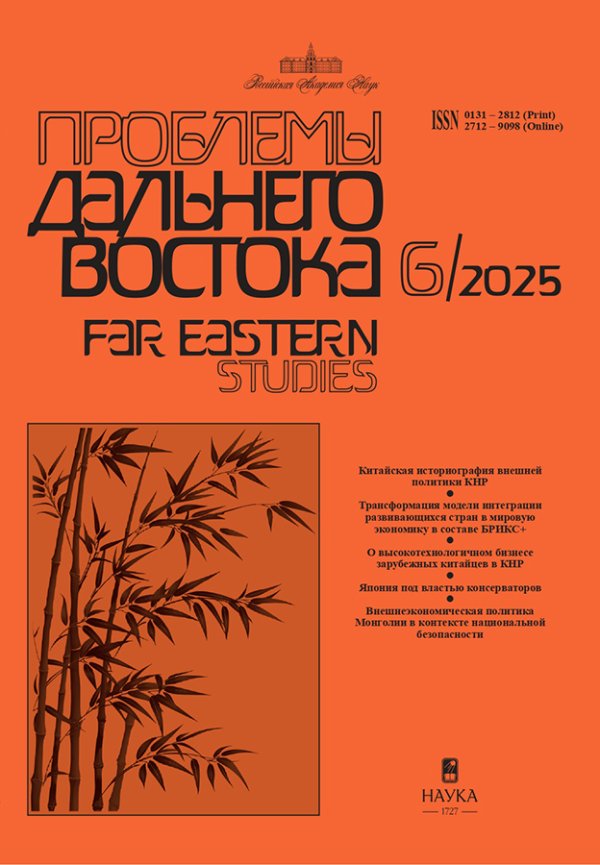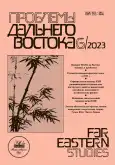Russian-Mongolian Border: Updating Checkpoints and Strengthening Infrastructure Connectivity
- Authors: Namzhilova V.O.1
-
Affiliations:
- Buryat Scientific Centre, Siberian Branch, Russian Academy of Sciences
- Issue: No 6 (2023)
- Pages: 75-86
- Section: Articles
- URL: https://journals.rcsi.science/0131-2812/article/view/251192
- DOI: https://doi.org/10.31857/S013128120028840-5
- ID: 251192
Full Text
Abstract
About the authors
Viktoriya O. Namzhilova
Buryat Scientific Centre, Siberian Branch, Russian Academy of Sciences8, Sakhyanovoy Str., Ulan-Ude, 670047, Russian Federation
References
- Дондоков З.Б.-Д., Намжилова В.О. Экономический коридор Китай — Монголия — Россия: выстраивание инфраструктурной связанности в условиях глобальных вызовов // ЭКО. 2022. № 12. С. 52–71. doi: 10.30680/ECO0131–7652–2022–12–52–71
- Изотов Д.А. Периферийные экономики Северо-Восточной Азии в период пандемии COVID-19: Монголия и КНДР // Регионалистика. 2021. Т. 8. № 6. С. 85–100. doi: 10.14530/reg.2021.6.85
- Лузянин С.Г. Россия — Монголия — Китай: исторические и современные трансформации // Восток. 2021. № 5. С. 141–152. doi: 10.31857/S086919080016633–3
- Намжилова В.О. Инфраструктурный ландшафт в трансграничье России, Монголии и Китая: преобразования и ориентиры // Азия и Африка сегодня. 2022. № 11. С. 13–20. doi: 10.31857/S032150750020155–2
- Намжилова В.О., Батомункуев В.С. Монголо-китайская граница: преобразования приграничной инфраструктуры и влияние ЭПШП // Проблемы Дальнего Востока. 2021. № 1. C. 21–32. doi: 10.31857/S013128120013887–6
- Намжилова В.О., Писковая А.А. Панорама российско-монгольской торговли: региональные особенности и структурные изменения // Российский внешнеэкономический вестник. 2023. № 6. С. 44–56. doi: 10.24412/2072–8042–2023–6–44–56
- Совместное заявление Президента Российской Федерации и Председателя Китайской Народной Республики о плане развития ключевых направлений российско-китайского экономического сотрудничества до 2030 года // Президент России. 21.03.2023. URL: http://www.kremlin.ru/supplement/5919 (дата обращения: 15.09.2023).
- Сысоева Н.М. Забайкалье как узел коммуникаций с внешним миром: потенциал и риски // Регион: экономика и социология. 2023. № 3 С. 265–281. doi: 10.15372/REG20230311
- Larin V.L. New architecture of Pacific Asia in the 21st century: opportunities and challenges for Mongolia and Pacific Asia // The Mongolian Journal of International Affairs. 2021. Vol. 22. Pp. 42–53. doi: 10.5564/mjia.v22il.1771
- 中蒙俄经济走廊建设重点问题研究 (Исследование основных проблем строительства экономического коридора Китай-Монголия-Россия). 内蒙古自治区发展研究中心. 内蒙古自治区经济信息中心 著. 北京: 人民出版社, 2016年.
- 祁治业,范丽君. 冷战后俄蒙关系的演进轨迹与基本特征 (Траектория эволюции и основные характеристики российско-монгольских отношений после «холодной войны») // 俄罗斯学刊. 2023年. 第1期. 第99–119页.










